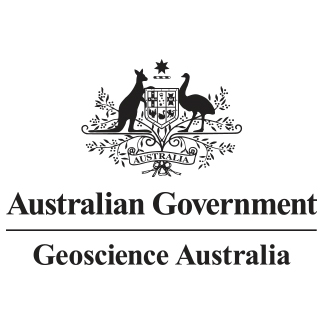Full description
Geoscience Australia commissioned the AusAEM Year 1 NT/QLD survey as part of the Exploring for the Future (EFTF) program, flown over parts of the Northern Territory and Queensland. The EFTF program is led by Geoscience Australia (GA), in collaboration with the Geological Surveys of the Northern Territory, Queensland, South Australia and Western Australia. The program was designed to investigate the potential mineral, energy and groundwater resources in northern Australia and South Australia.The survey was flown during the 2017-2018 field season, using the TEMPEST® airborne electromagnetic (AEM) system operated by CGG Aviation (Australia) Pty. Ltd under contract to Geoscience Australia. AusAEM Year 1 was acquired with a 20-kilometre line separation and collected over 60,000 line kilometres of data in total. The AusAEM Year 1 NT/QLD survey also includes over 1,500 line kilometres of infill flying, which, was funded by private exploration companies in certain infill blocks within the survey area. The data from these infill blocks are now part of Geoscience Australia release to the public domain, for use in the minerals, energy and groundwater sectors.
Previously Released data (Phase 1)
In December 2018, we released a package, which contains data from the AusAEM Year 1 NT/QLD Airborne Electromagnetic Survey Phase 1.
This data package, with eCat ID 124092 titled “AusAEM Year 1 NT/QLD Airborne Electromagnetic Survey, TEMPEST® airborne electromagnetic data and Em Flow® conductivity estimates”. The package contains a) survey logistics and processing report, b) final processed electromagnetic, magnetic and elevation point located line data, c) processed electromagnetic, magnetic and elevation grids, d) point located conductivity estimates from EM Flow®, e) multi-plots of line data and conductivity sections, all produced by the contractor CGG Aviation (Australia) Pty. These products are downloadable from Geoscience Australia’s website:
(See http://www.ga.gov.au/metadata-gateway/metadata/record/gcat_124092).
The data provides new insights into vast areas in Northern Australia that have not been extensively explored previously.
Current Release (Phase 2)
This Phase 2 data release package contains results from inverting the electromagnetic data in the Phase 1 release. The inversion results were generated using Geoscience Australia's sample-by-sample layered-earth (1D) inversion, a deterministic regularized gradient-based algorithm, which we call GALEISBS (Brodie, 2016).
For the inversion of TEMPEST AEM data we have conventionally inverted the total (primary plus secondary) measured X-and Z-component data simultaneously to produce a single smooth layered conductivity model. To achieve convergence and derive an acceptable model and acceptable data misfits, we have found that it is necessary to solve for three geometry parameters; (1) Transmitter (Tx) –Receiver (Rx) horizontal in-line and 2) vertical separations and 3) the receiver pitch. This is the case even with the new Rx bird IMU measurements and calibrated data (Ley-Cooper et.al, 2019.).
We have extended the GALEISBS functionality to allow inversion of the vector sum of the X- and Z-component data. The rationale of modifying the algorithm is to eliminate the need to solve for Rx pitch, since the vector sum of the X- and Z-component data are insensitive to the Rx pitch. In doing this, we are gaining some robustness by not having to solve for one of the geometry parameters; however, the trade-off is that we are in essence losing the information implicit in the vector component data.
The inversions we deliver here we derived from a recently implemented XZ–vector-sum inversion, described in Ley-Cooper et.al, 2019.
The GALEISBS inversion products are available for download in parts based on the type of derived product. These are zipped into the following files:
1. galeisbs_vector_sum_point_located_data_ascii.zip
2. galeisbs_vector_sum_point_located_data_geosoft.zip
3. galeisbs_vector_sum_sctions.zip
4. galeisbs_vector_sum_gocad_sgrids.zip
5. galeisbs_vector_sum_georef_sections.zip
Lineage
Maintenance and Update Frequency: asNeededNotes
PurposeThis survey will be incorporated into the extensive national collection, referred to as the AusAEM airborne electromagnetic acquisition program (Ley-Cooper et al., 2019). The objective of this program is to attain comprehensive AEM coverage throughout Australia. It is intended to provide freely accessible reconnaissance-scale geophysical data to support the investigation and identification of potential mineral, energy, and groundwater resources within Australia.
Created: 06 2018
Issued: 11 06 2018
Modified: 10 12 2018
Modified: 09 04 2019
Modified: 20 05 2019
Modified: 17 12 2019
Data time period: 2018-07-31 to 2018-08-04
text: westlimit=132.00; southlimit=-24.00; eastlimit=144.00; northlimit=-16.00; projection=GDA94 (EPSG:4283)
User Contributed Tags
Login to tag this record with meaningful keywords to make it easier to discover
Description of contents (Readme) (pdf) [1MB]
uri :
https://d28rz98at9flks.cloudfront.net/132709/132709_00_1.pdf![]()
ASEGGDF2 format point located line data conductivity model (dat) [3.2GB]
GEOSOFT GDB format point located line data conductivity model (gdb) [4.1GB]
GoCAD SGrid format conductivity models (data) [1.3GB]
PDF format graphical multiplot sections (pdf) [1.4GB]
All data [14.2 GB]
uri :
https://d28rz98at9flks.cloudfront.net/132709/132709_05_1.zip![]()
Georeferenced (PNG) conductivity sections (png) [1.8 GB]
- Local : pid.geoscience.gov.au/dataset/ga/132709
- global : 4769541e-bbda-413c-8830-529eb27d4113


